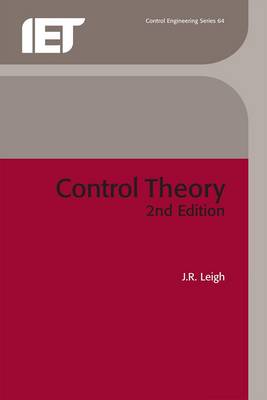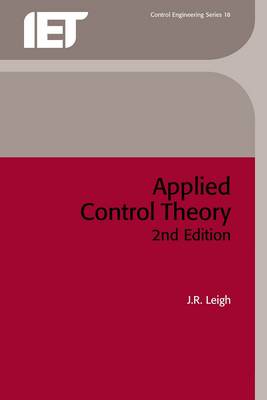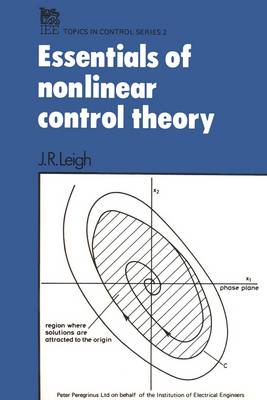Control, Robotics and Sensors
4 total works
Concise highly readable book emphasising the concepts and principles that are prerequisite for understanding both traditional and recent control theory.
The text is enlivened by a large number of interesting interludes that complement the main text.
This second edition of Control Theory: A Guided Tour (IEE 1992) has been fully revised and enlarged and now contains an introduction to H infinity methods as well as a new chapter on Artificial Intellingence (AI) methods and a retrospective review of how control theory developed. All the topics covered can be taken further using the extensive annotated reference section.
'To the surprise of some undergraduates, processes do not carry labels marking their variables nor, alas, are they conveniently classified into linear, nonlinear, stochastic, etc., categories. The ability to come to terms with this situation is a prerequisite for anyone proposing to succeed in an industrial environment.' This quotation from Chapter 1 characterises the viewpoint of the book, which is concerned with the application of control theory to real problems in their industrial context.
The book is structured around the following beliefs:
- (a) Economic aspects must be considered at an early stage of any project.
- (b) Simple techniques and ready-made manufacturer's solutions should be applied wherever possible.
- (c) More advanced techniques will be received enthusiastically in those applications where they can offer a genuine contribution.
- (d) Control systems using distributed microprocessor power will have an impact that is difficult to exaggerate. Control engineers must become familiar with the concepts involved.
- (e) Familiarity with a wide range of applications is indispensable in developing an efficient approach in the field of applied control theory.
This second edition includes new material and supporting references on:
- robotics control
- programmable logic controllers
- self-tuning controllers
- distributed computer control systems
- biotechnological control
The book should be accessible to a wide variety of engineers. Preferably they should have an elementary knowledge of automatic control theory.
The temperature on earth varies over a wide range whereas man can only work comfortably in a quite narrow temperature range that has to be artificially maintained. In addition, many industries have extensive requirements for temperature control. Thus control engineers are called upon very frequently to design temperature control loops.
A general knowledge of control engineering is of course useful in designing temperature control loops.However, temperature control has some special features:
(i) asymmetries caused by the usually differing mechanisms of heating and cooling(ii) complex nonlinear heat-transfer effects(iii) highly application-dependent measurement problems.The intention of this book is to treat the theory and practice of temperature measurement and control, and important related topics such as energy management and air pollution, at a level suitable for engineering and science undergraduate and postgraduate students, and in a manner designed to make the book valuable to practising engineers. There are no specific prerequisites for the book although a knowledge of elementary control theory could be useful.
The philosophy of the book is a compromise between fundamentals and practical guidelines. It is the author's firm belief that it is highly desirable to obtain a good insight into theoretical fundamentals (deeper than can be justified on grounds of immediate utility) before embarking on practical applications. The aim has been to produce a practically oriented text within a firm theoretical outline.
The first half of the book is an application oriented survey of temperature measurement techniques and devices. The second half is concerned mainly with temperature control in both simple and complex situations. There are chapters on heat sources, commercially available controllers, temperature control in buildings and energy conservation. The book ends with an appendix that rapidly surveys the underpinning thermodynamic theory.
The book is concerned with understanding the structure of nonlinear dynamic systems within a control engineering context After a discussion of theoretical foundations, the development moves to specific techniques (describing function method, phase plane portrait, linearisation methods). The treatment then becomes oriented to qualitative analysis and maintains this emphasis to the end of the book. The broad aim is to develop methods that will allow the topology of system behaviour to be visualised. The main tools are Lyapunov methods, extending to include recent work on system decomposition. A bibliography lists both earlier seminal and recent literature to allow the reader to follow up particular aspects.



